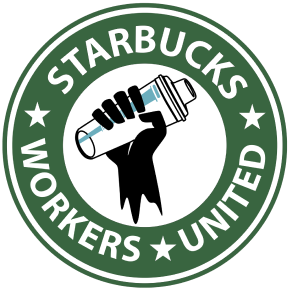This Key Labor Law Helps Protect Workers and Keep Employers on their Toes
Knowing your Rights: Filing an Unfair Labor Practice
The deal between Amazon and the National Labor Relations Board (NLRB) came out of six charges of unfair labor practices filed by workers in Chicago and Staten Island.
The Unfair Labor Practice (ULP) is an essential tool for the rank-and-file worker. Here at the Emergency Workplace Organizing Committee (EWOC), we’ve helped workers across various industries fight back against unjust conditions by filing these grievances with the NLRB. Successful ULPs are often a crucial first step for workers trying to organize, as we’ve just seen with our comrades at Amazon and in workplaces that are organizing with EWOC. If you understand what is and isn’t an unfair labor practice and the process that comes with filing one, you’ll be ready to stand up to an employer when the time comes.
The History of the ULP
Unfair Labor Practices are actions taken by either an employer or union which violate the National Labor Relations Act, the foundation of American labor law. The ULP is an essential piece of this bill, as it codified and outlawed many of the tactics employers had been using — and still use — to hinder labor organizing.
What Counts as an Unfair Labor Practice (ULP)?
Section 8 of the National Labor Relations Act (NLRA) broadly characterizes actions employers may not take, including
- Interfering with two or more employees acting in concert to protect rights provided for in the Act, whether or not a union exists
- Interfering with the formation or administration of a labor organization
- Discriminating against an employee for engaging in concerted or union activities
- Discriminating against an employee for filing charges with the NLRB or taking part in any NLRB proceedings
- Refusing to bargain with the union that is the lawful representative of its employees
These are only general guidelines, and the NLRB always investigates the particular circumstances within a workplace to determine if a ULP filing is justified. It is also important to note that there are grounds on which an employer can file a ULP claim against a union.
Over many decades, labor law has been badly weakened in the United States. Many workers believe they are powerless to stop an employer from committing unfair and illegal acts — like holding captive audience meetings — and that they can be punished or retaliated against for organizing.
How and When to File
If properly understood, the ULP can be a critical tool in a rank-and-file worker’s arsenal and a pivotal part of running a successful strike.
Crucially, a ULP must be filed within six months of the alleged incident, unless an employer has taken steps to cover up the violation. Any employee can file a ULP; the Federal Labor Relations Authority has a guide to filing, and the NLRB website includes all of the necessary forms. You do not need to be part of a formal union to seek assistance through the NLRA. If you are a worker covered under a collective bargaining agreement, it’s best to consult with your shop steward first, in case your particular grievance may be better handled through a separate union grievance process. It also may be an issue, like a wage violation, that can be better addressed through the Fair Labor Standards Act.
It’s ultimately up to the discretion of the NLRB or the NLRB General Counsel to determine the validity of the charges you bring. The process takes time — usually several months at least — and there are a range of possible outcomes, including formal and informal settlements. Judgments from the board could include awarding back pay or leveling fines. An employer may be forced to return to bargaining, agree to a set of fair election principles, or simply acknowledge its breach. Given this range of possible outcomes — even given a favorable judgment — a smart rank-and-file unionist will see that ULP law offers strategic leverage, not just a grievance process.
ULP and Strikes
The NLRA established specific instances in which workers have a right to strike. If a strike does not fall within certain guidelines, it may be unprotected or unlawful, and, in some cases, strikers can be permanently replaced. But under the law, a strike undertaken in protest of a ULP enjoys significant protections. When a strike qualifies, the activity is protected, and workers’ jobs are too. ULP strikers cannot be fired or replaced, and when the strike ends, they must be reinstated.
The rules of the NLRA are never set in stone, as the National Labor Relations Board is constantly reassessing or modifying them, which sometimes complicates the enforcement of these protections. We recently saw this play out in real time, as Kellogg management attempted to permanently replace over 1,400 workers across four factories, who had been striking for nearly three months. Kellogg’s public commitment to an obvious violation of ULP strike protections — hiring permanent replacements — instigated reactionary political pressure. It’s fair to theorize that our union comrades from Michigan to Tennessee finally won a fair contract because they stood strong backed by the leverage of a ULP strike. The same employment protections are not afforded to “economic strikers,” the other lawful class of strikers.
As a worker, it’s essential to know your rights, and to know how you can properly exercise them. Check out our organizing guide or talk to an EWOC organizer today to learn what more you can do to change the conditions of your workplace for the better.




